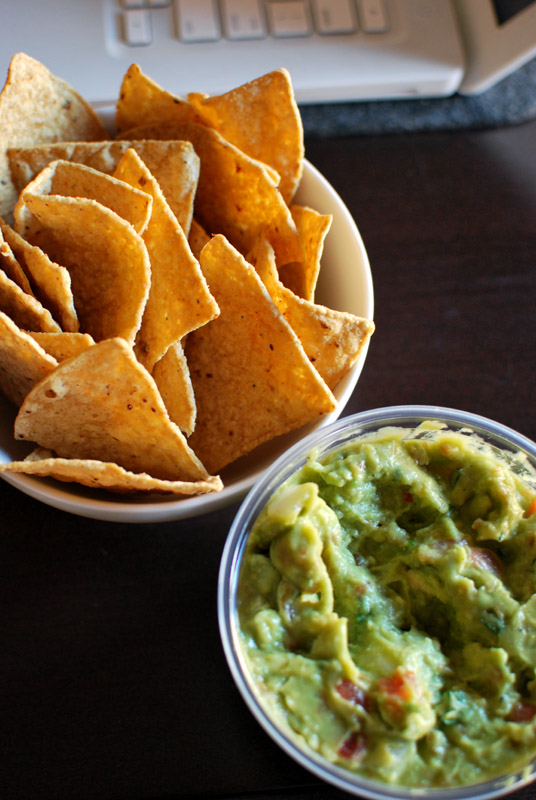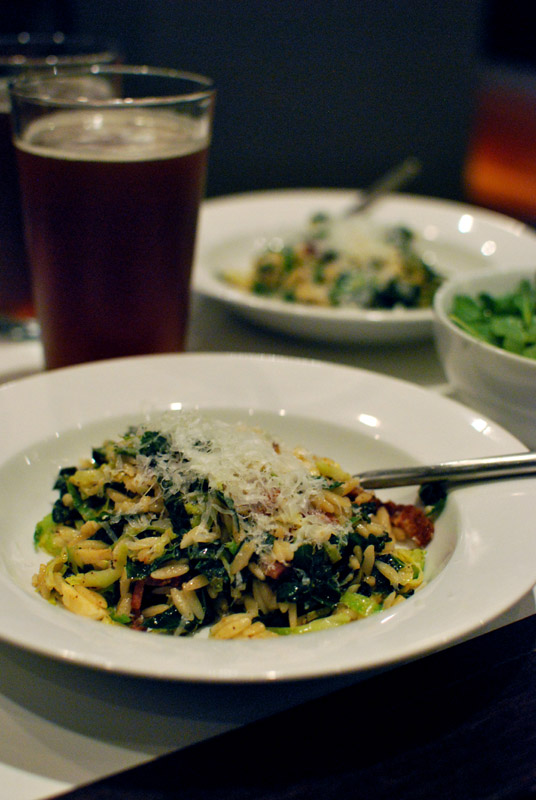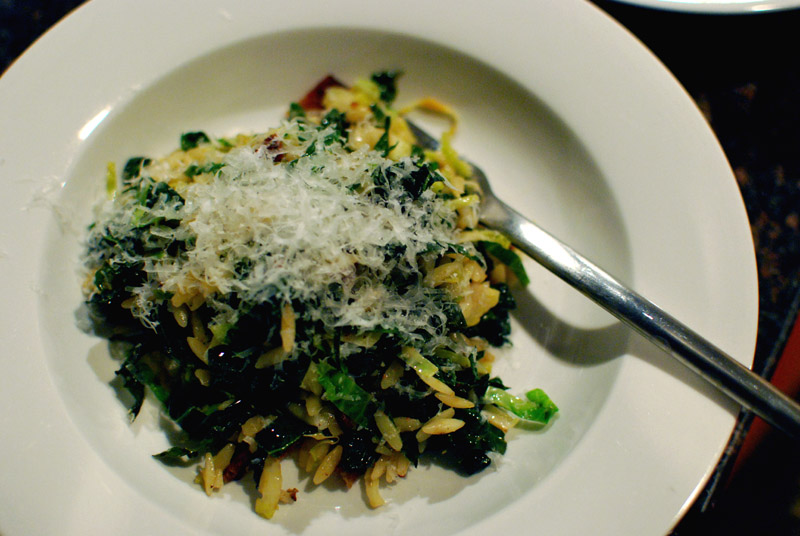
I’ve always been intrigued by mirlitons. Between the puckered pear shape, the Granny Smith color, the summer squash flesh, and the single flat seed, you might not know quite what to make of one. For many people, it probably falls into the category of “foods you’ve never bought because you don’t know what on Earth it is, or what on Earth to do with it”.
But if you’re from New Orleans, you and your Mama an’ dem can probably make plenty good use of a sack of mirlitons. Alternatively known as chayote, cho-cho, alligator pear, or nearly a dozen other names, the so-called “mellyton” is often used in Cajun cooking, though it’s rarely served alone due to its mild flavor. One favorite preparation of mine is to boil mirliton halves until tender (a surprisingly long wait, up to 45 minutes), then scoop out most of the flesh, and chop it. These bits are used in a crawfish or shrimp dressing, which gets stuffed into the hollowed-out shells. Baked until crisp on top, it’s one of the finer uses for a mirliton you’ll ever try, including cho-cho pie.
Coming hot on those heels, however, is the pickled mirliton. I’m a huge fan of pickles generally speaking, but there’s something especially magical about the way a mirliton will transform in a bath of brine. Other vegetables will typically retain their natural flavor when pickled; a carrot will taste of carrot, a cauliflower will taste of cauliflower. But perhaps this is from a tendency to pickle those vegetables solo, and a mirliton naturally needs a bit of help to avoid blandness. I have yet to see a pickled mirliton recipe that includes less than three other vegetables.

During the pickling process, the brine transfers a fair amount of flavor from the onions, carrots, fennel, and bell peppers directly into the mirlitons. The result is that the other vegetables taste a bit muddled, though still crunchy and certainly good to eat; but the mirlitons! oh, the mirlitons! They become vibrant and fresh, with a bouquet of flavors that is impossible to pin down, with a crisp crunch reminiscent of a stalk of celery. How the mild, slightly-starchy thing turns into such a full-flavored and complex treat, getting increasingly better by the day, is a delight to behold.
Some like to peel the mirlitons before pickling, but I’ve never done so. The skin is perfectly edible; besides, look at those puckered ends. There’s no way I could be bothered with peeling around that mess, and there’s no reason you should either.

I feel I should warn you. It might not seem like this recipe would make a lot, but it makes what I would describe as a “boatload” of pickles. I estimate it’s about three quarts, but I could be way off. Either way, you’ll be eating mirliton pickles for a while, so it’s a good thing they’re just as good in martinis and Bloody Marys as they are in tuna salad or on roast beef sandwiches.
Or, you know, straight from the jar, standing in front of the refrigerator.
[And now for the safety lecture and disclaimer: when making pickles, of course you’re supposed to sterilize all jars and bottles within an inch of their lives, then seal the jars by processing them in a hot bath. Me, I’ve never done that, for two reasons. First, pickles rarely last so long in my house that they’d have to be treated any differently than normal leftovers. Second, I store my pickles in scrupulously clean jars in the refrigerator, and I’ve never had any strange creatures growing in my pickles (even the ones that I forgot about for several months). Between a clean jar, the chill of a fridge, and a saline brine, contamination should not be a problem. Of course, if you ever spot something fuzzy, funky, or otherwise uncool on your pickles, throw them out!]

Mirliton Pickles
Adapted from Marcelle Bienvenu, exact source forgotten with apologies
Makes about 3 quarts
Ingredients:
- 3 to 4 mirlitons, seeds removed, sliced into batons
- 2 medium carrots, peeled and sliced into thin batons
- 1 large yellow onion, peeled and thinly sliced (across the grain)
- 1 large red bell pepper, sliced thinly
- 1 large fennel bulb, sliced thinly
- 2 cups distilled white vinegar
- 1 cup water
- 1/2 cup kosher salt
- 1/2 cup sugar
- 4 large garlic cloves, peeled and sliced
- 1 tablespoon mustard seeds
- 1 teaspoon whole allspice
- 1 teaspoon whole black peppercorns
- 3 bay leaves
- 5 to 6 dried chilies (optional, but highly recommended)
Directions:
- 1. In a large bowl, combine the mirlitons, onion, bell pepper, carrots, and fennel. Cover with cold water and several handfuls of ice cubes. Place a plate on top to keep vegetables submerged. Let stand for 3 hours at room temperature. Drain well. (This is a good time to sterilize the jars you’ll be storing the pickles in.)
- 2. Combine remaining ingredients in a large non-reactive pot. Cover and bring to a boil. Let boil, covered, for about 5 minutes before adding the drained vegetables. Turn off heat, cover, and let stand 5 minutes. Arrange the vegetables in the sterilized jars, and cover with the liquid. Seal the jars with the lids, and let cool at room temperature. Store in the refrigerator, for at least 6 days before using.











